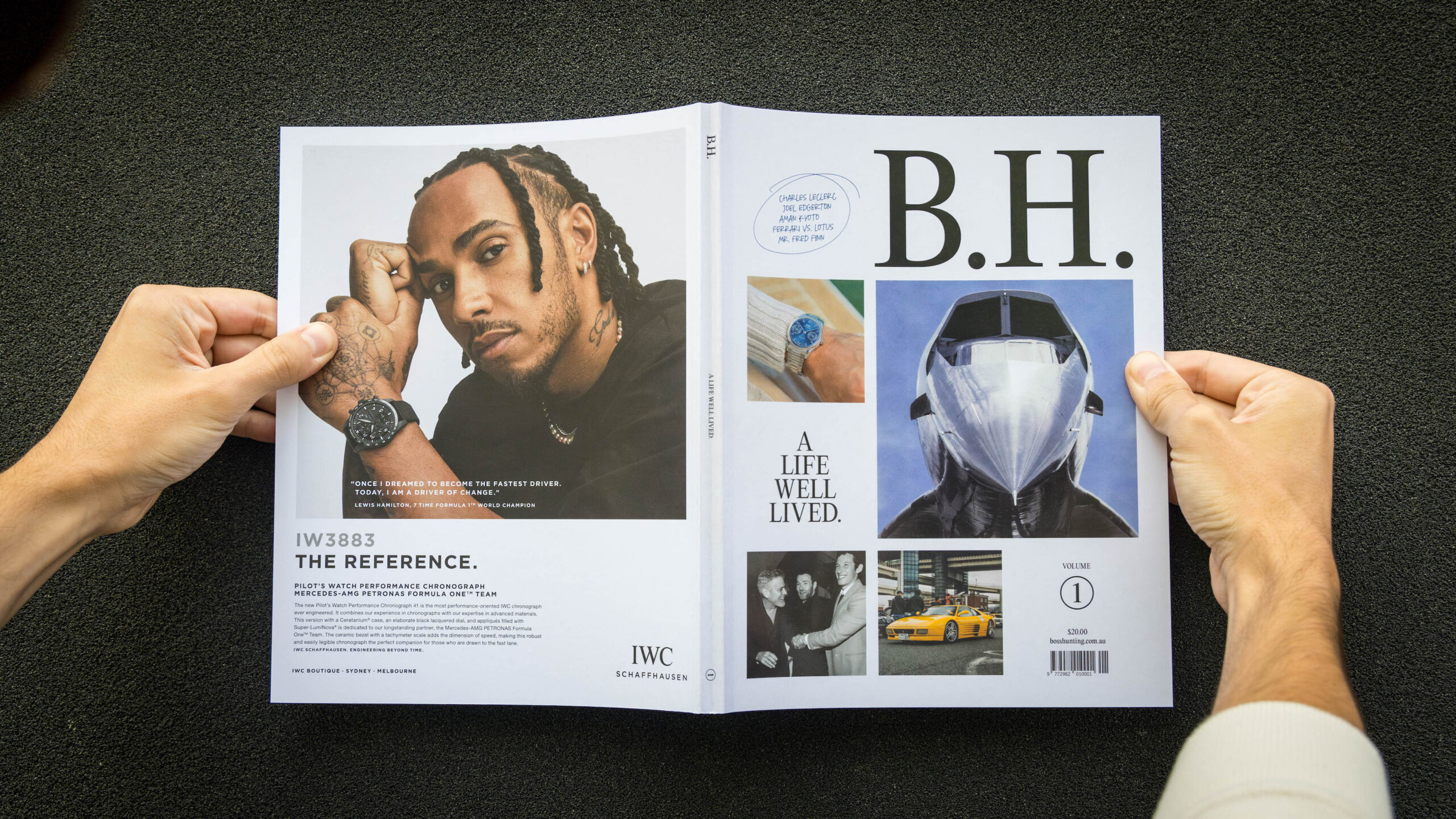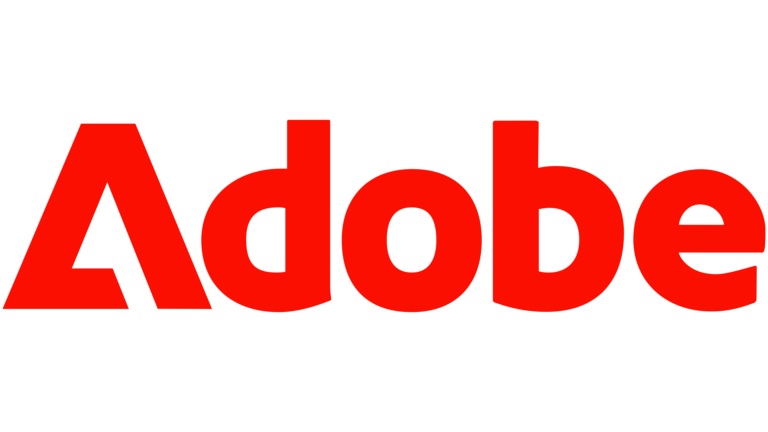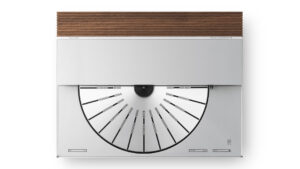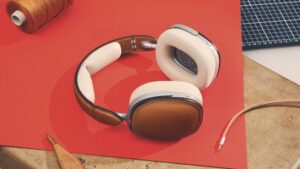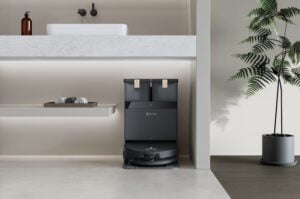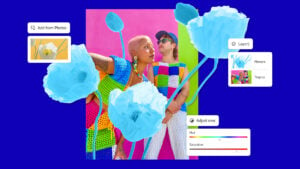Building a brand new magazine, from concept to creation, in a little over ten weeks is not something I’d recommend for those that value their sanity, but I’m here to tell you that it can be done. Designing a magazine starts well before it’s time to put copy and images on a page, and while those elements are critical to a publication’s success, the look, the feel, the style, and the tone, say just as much about the book as what’s in it, and nailing it starts with finding the right inspiration. And then, only once there’s a clear vision of the product, can sample pages begin to take shape.
For B.H. Magazine we sought inspiration from abroad, looking at architecture, design, culture and fashion publications rather than men’s lifestyle because we wanted to deliver something unique in our space. However, we knew we had to find a balance between the edginess of aptly named INDIE magazine or Apartmento, and the magazines Australian men grew up reading.
The process begins by introducing all the desired elements to a single article layout, and addressing each individually. Header fonts, paragraph fonts, caption fonts, pull quotes, columns, colours, images, illustrations, page numbers, borders, and dinkus usage are all open for discussion as you try to refine the layout, to use as a foundation for the master pages and overall design direction.
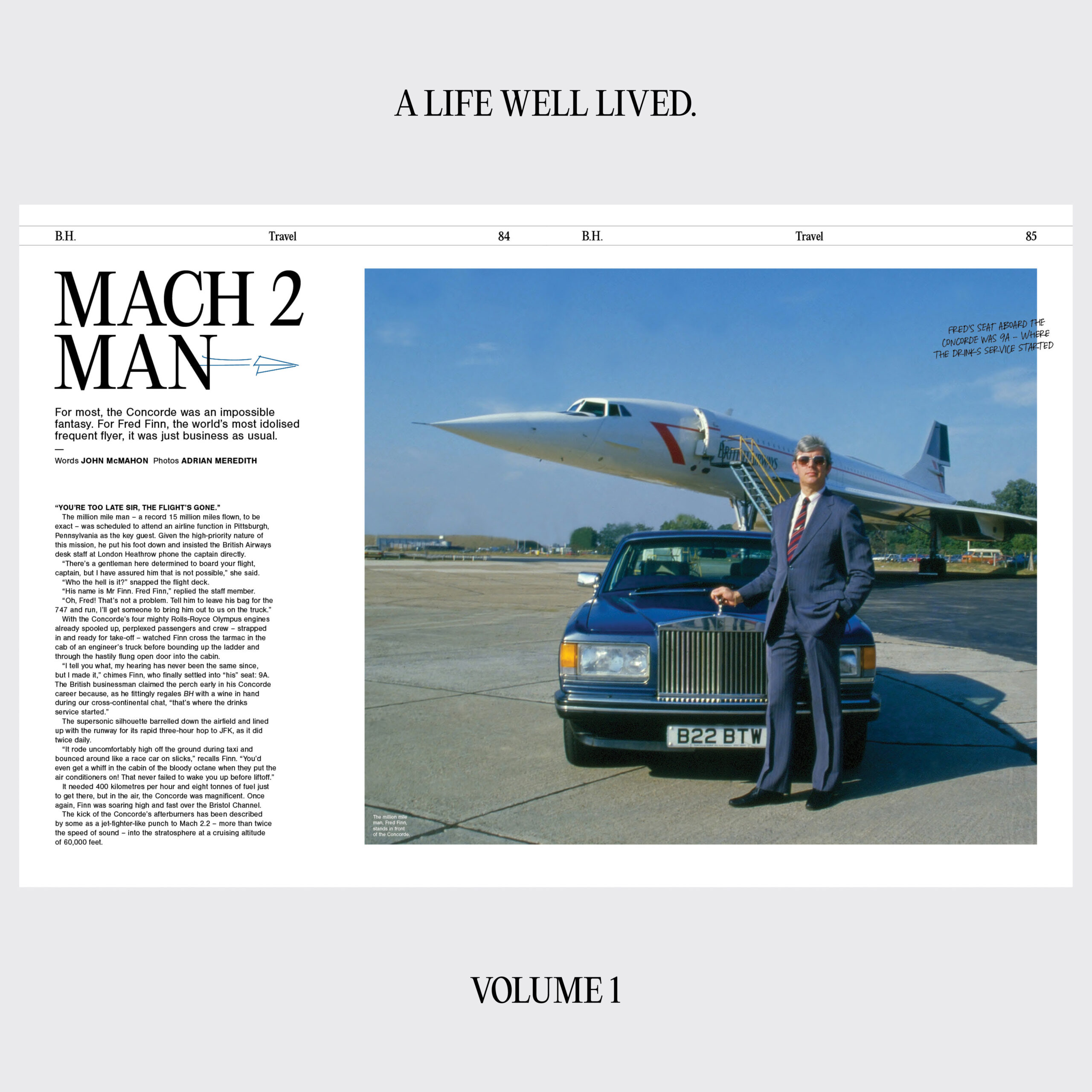
At the heart of this process lies Adobe InDesign, the industry-standard software for all manners of print design, especially those requiring advanced character formatting. InDesign’s features, like master pages, paragraph and object styles, grid systems, and powerful export capabilities allow designers to create consistent layouts, manage content efficiently, and export high-quality and compatible files for commercial printing.
One of the most powerful tools in Adobe InDesign‘s arsenal is the concept of Master Pages. Master Pages allows users to create templates for recurring elements such as headers, footers, backgrounds, page numbers, and in our case category headers, ensuring uniformity throughout the magazine’s 162 pages. They can also play a valuable role in the initial design (or redesign, which we did three weeks before printing) stage as you can make quick changes to those elements, and then see how it looks across a variety of layouts, with different headers and imagery to gauge look and feel.
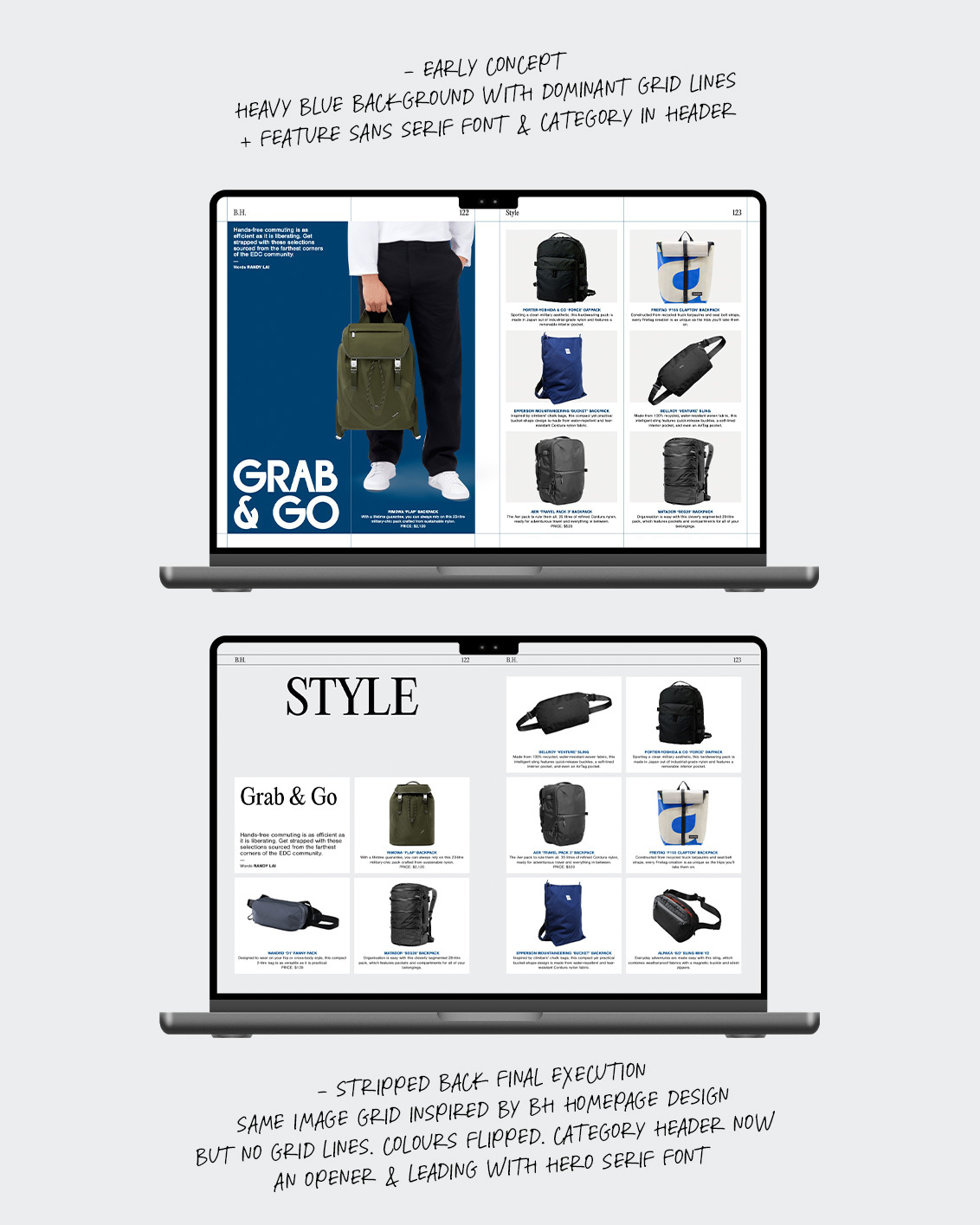
Arguably the most fastidious part of the design process, consistent text formatting is essential for a slick end product both for design and readability. Once you’ve settled on your fonts, their sizing and their spacing, they can be set as predetermined styles and applied with a single click. For B.H. Magazine we utilised two header stylers in the same font – one in all caps – then a paragraph style for general in article copy, pull quote style, a handwritten style ‘markup’ style, a caption style and also a gutter credits style.
The Eyedropper Tool is also a very handy feature for formatting consistent text on the fly. It works by highlighting the text you are editing, then hovering over the paragraph style you want to copy, and clicking one to apply it to the text you are working on.
The most anxiety inducing part of creating a print publication is knowing that errors are permanent – unlike our website where issues can be rectified in seconds. As the Editor-in-Chief, the idiom “the devil’s in the details” has never weighed so heavily on my shoulders. However, it also positively influences the final product, striving for perfection in every header, image and line of text that ends up on the pages.
When it comes to the sub editing, and final proofing, InDesign’s advanced character formatting tools are what really sets it apart from the competition. You wouldn’t know it unless you were a designer, or had worked in magazines previously but every header (bar one which I can’t un-see) was kerned, and every single line of text in our debut issue was tracked and spaced to fit text, improve the overall design, and ensure there were no orphans (single words on a line).
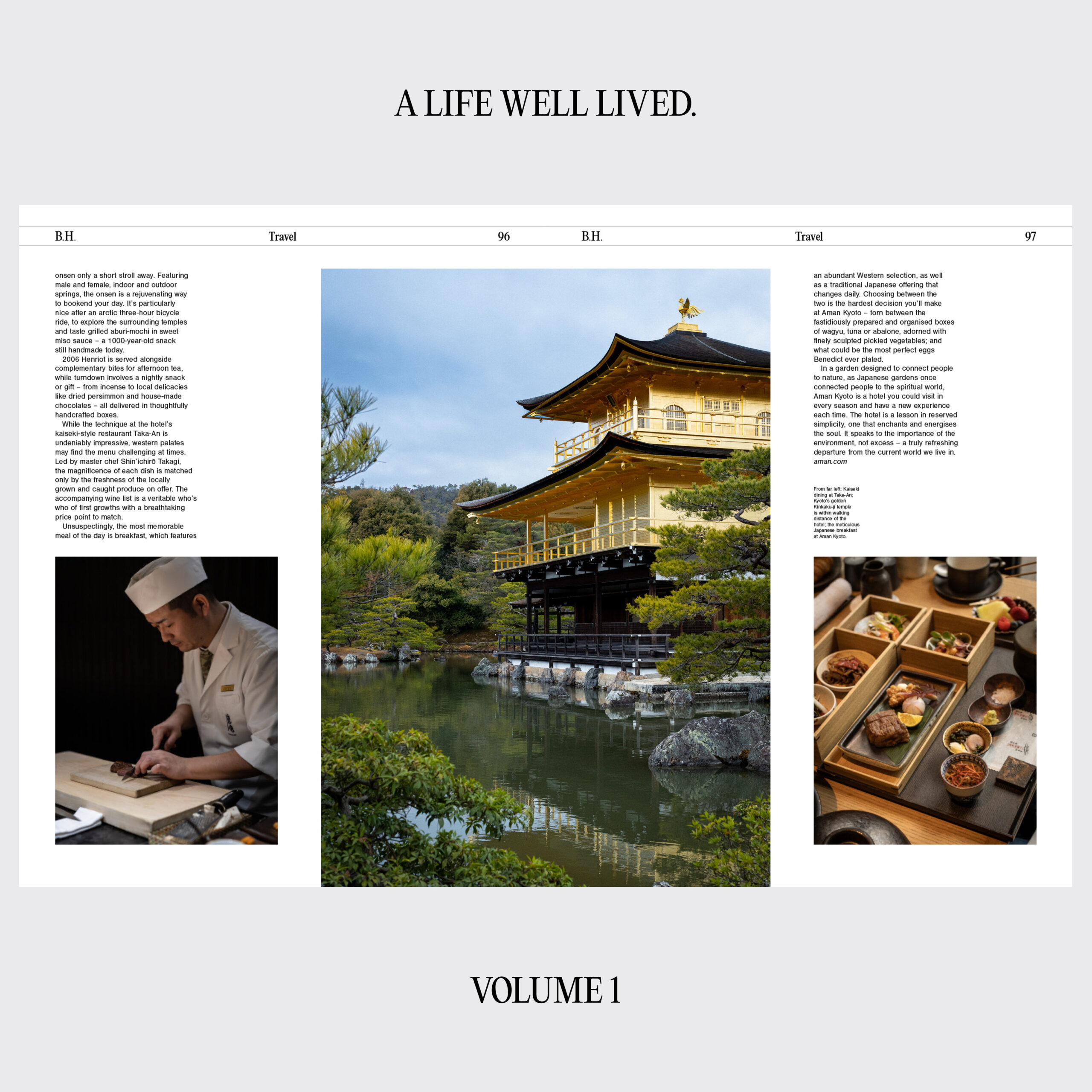
Following on from Master Pages, creating a visually pleasing layout also requires precise alignment and spacing which is where InDesign’s Grids and Guides feature shines, facilitating the creation of dynamic and organized layouts. We utilised columns extensively in our debut issue, and by setting up a grid system with defined column widths and gutters, we could ensure consistent alignment, thus creating a visually cohesive layout for readers.
And while not necessarily a guide, one shortcut I found vital was the ‘W’ key, which changed the display mode of the document, removing the grids so I could see the borderless layout without editing marks, exactly as it will be once saved or printed.
Once the design is complete, the final step is preparing the magazine for printing or digital distribution. Adobe InDesign‘s Packaging and Exporting features simplify this process, ensuring a smooth handoff to printers or digital platforms.
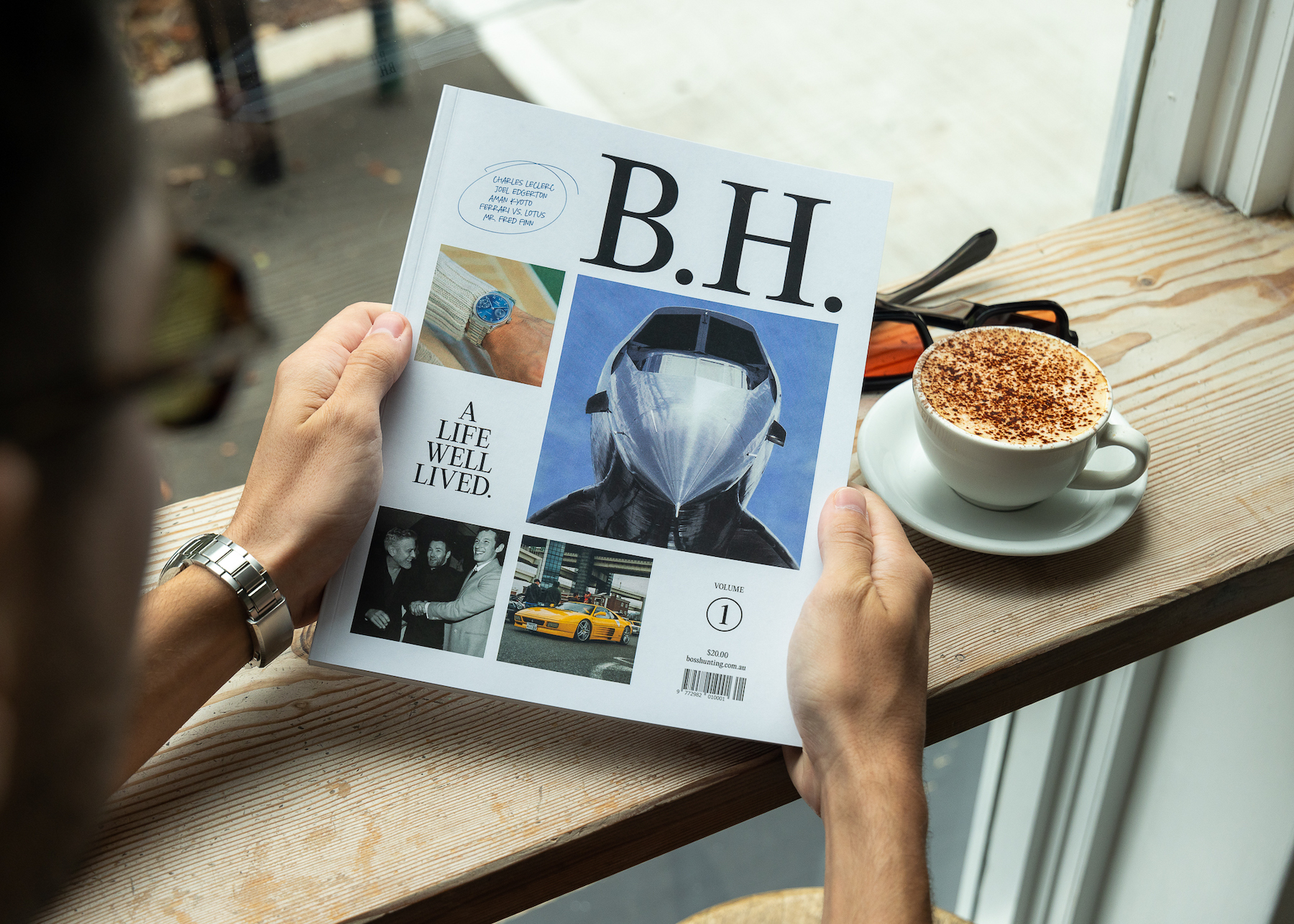
For print publication, designers can use the Packaging feature to collect all necessary fonts and images into a single folder, ensuring that everything is included for the printing process, then choose to export in single pages or spread at your chosen image compression and output, with all required bleed and trim settings. For digital distribution, the Exporting feature allows users to save the magazine as a PDF/X-4 file optimized for online viewing, preserving layout integrity and colour accuracy.
The coolest thing about InDesign is that I am not a designer – I’m a photographer and editor with a basic understanding of Adobe Creative Suite who has used the software to bring a brand new print product to life. With YouTube tutorials and limitless templates now at your fingertips, learning and creating has never been easier.
To say it is an essential piece of kit for magazine design is underselling it. It’s the only piece of kit.
Unlock Adobe InDesign and the entire suite of Adobe products now with a Creative Cloud plan that works for you.
This article is presented in partnership with Adobe. Thank you for supporting the brands that support Boss Hunting.
